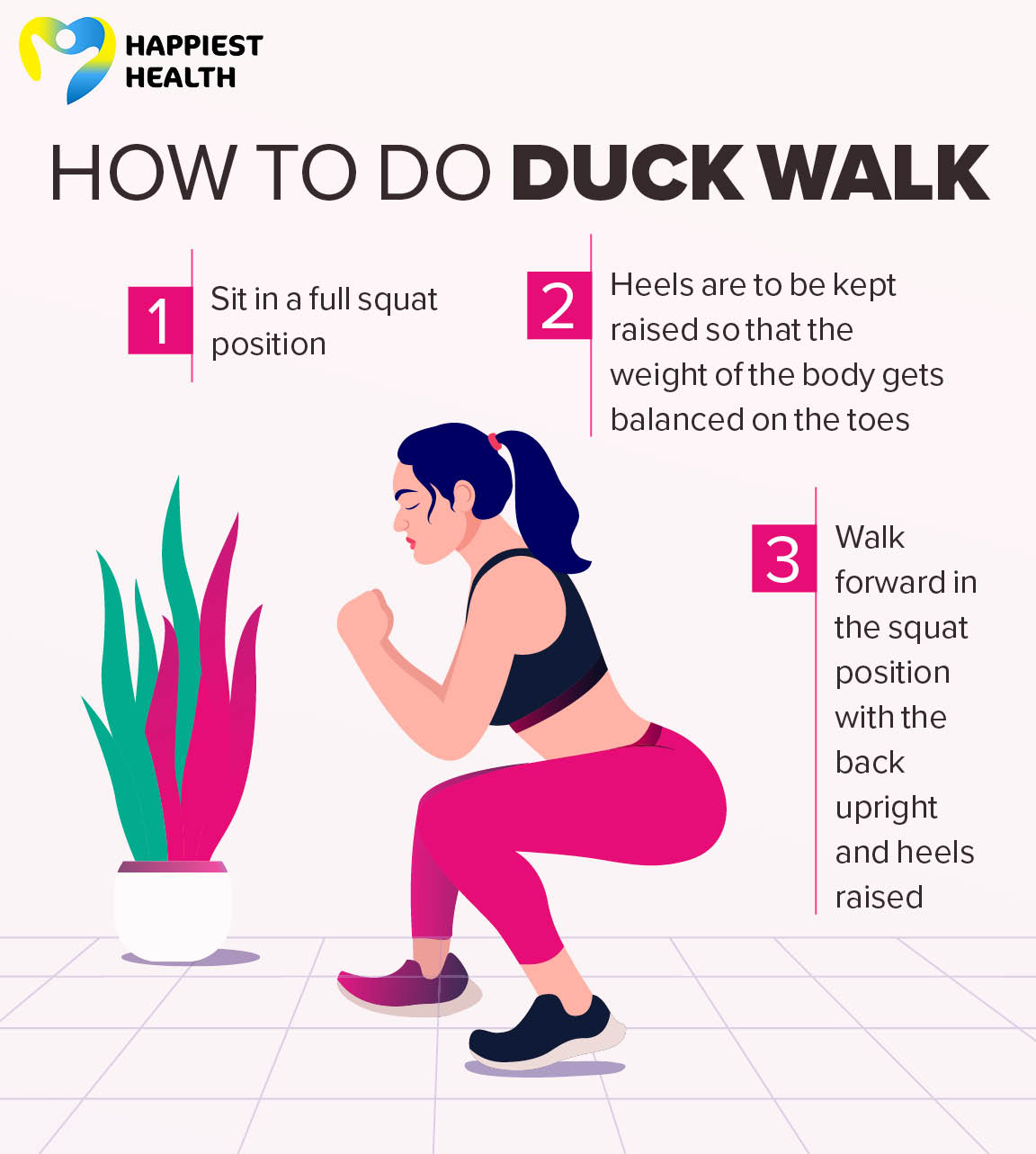
The benefits of walking are well-known. So are the gains provided by squats, an effective compound exercise. But ever tried combining them both?
We are talking about the duck walk or duck-walking exercise, which takes both walking and squats to the next level, magnifying their benefits as well as adding some more. A compound exercise, it targets multiple muscle groups.
The exercise, however, possibly caught the attention of the masses first in a different setting, far away from gyms. Rock ’n’ roll legend Chuck Berry used to have fun with it as part of his on-stage show, doing it while playing his guitar. This was the 1950s.
Now, in the 21st century, Berry’s duck walk is a plateau-breaking bodyweight exercise for both professional athletes and fitness enthusiasts.
Muscles targeted by duck walk
The duck walk is a great lower-body and core exercise since multiple muscle groups are worked out through it: from the gluteal muscles, hip flexor muscles, quadriceps, hamstring muscles, calf muscles, abdominal and core muscles (primary targets) to the hip adductor muscles (secondary targets).
Duck-walk exercise benefits
Strengthening of the gluteal and hip-flexor muscles improves posture and helps in injury prevention.
The other benefits of duck-walking include:
- Helps in making the cardiovascular system stronger.
- Is a great fat burner and helps in weight loss.
- Strengthens muscles.
- Helps break fitness plateau.
- Improves athletic performance.
How to incorporate duck walk into routine
“The exercise is a hard one and a proper warm-up is needed before doing it, so the duck walk should never be done in the initial phase of workout or during the warm-up phase,” says Kishan Thapa, a fitness trainer from Ahmedabad.
It can be done twice a week, during cardio workouts or even on leg day, says Thapa.
“If someone intends to include the exercise in their fitness routine, then they can do it at the end during the warm-down phase — where it can be done instead of cardio for two days a week,” adds Thapa. “It can also be incorporated into the leg day — where one set can be done after completing a set of squats. As a simple routine, you can walk for a certain distance either in a park or, say, from one end of the gym to the other.”
Since duck-walking is strenuous, ensure that the distance or the pace at which you do the exercise does not lead to overexertion or injury. Also, people with arthritis, knee issues or injuries should avoid the duck walk altogether.
Takeaways
- The duck walk is a compound exercise which targets many muscle groups in the upper and lower limbs and the core.
- Duck-walking exercise strengthens the gluteal and hip-flexor muscles, enhancing posture and helping in injury prevention.
- It is a great fat burner and helps in weight loss.

















